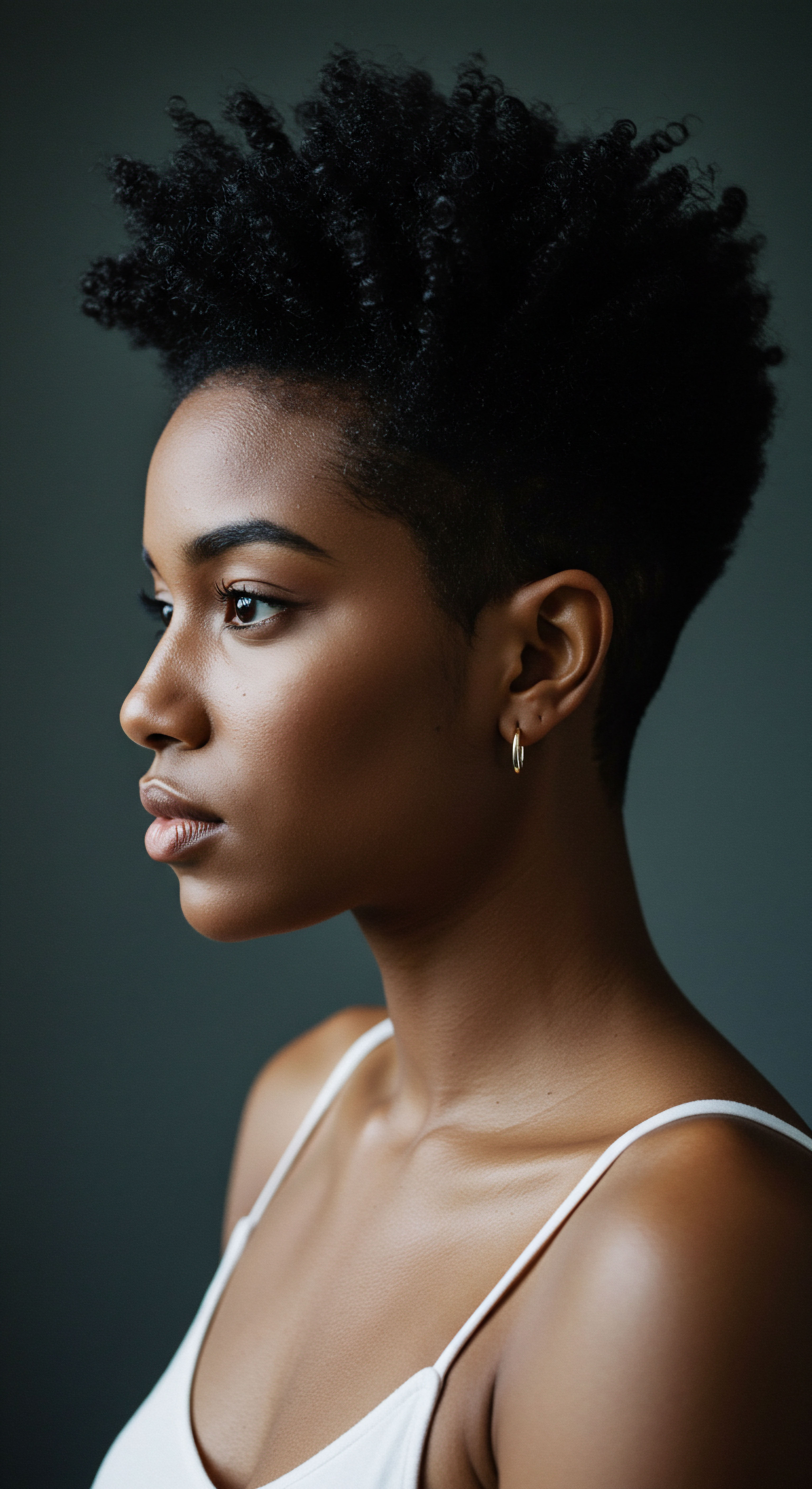
Roots
A quiet curiosity often stirs within us when we consider the enduring presence of braided forms. From the earliest human gatherings, strands of hair, artfully bound, have marked moments, declared allegiances, and spoken silent volumes. These coiled patterns, far from mere adornment, represent a deep lineage, a testament to human ingenuity and connection across epochs.
They carry whispers of ancient lands and the wisdom of generations, a living archive upon the head. To truly appreciate their historical significance, one must look beyond the surface, recognizing them as fundamental expressions of identity and survival.

Hair as a Chronicle of Time
The very structure of hair, its ability to retain shape and withstand environmental pressures, made it a natural medium for record-keeping. Before written languages were widespread, societies utilized visual cues to convey complex information. Braids served as a literal and figurative calendar, marking age, marital status, or readiness for certain life stages.
A child’s first braids might signify entry into a community, while an elder’s intricate style could narrate a lifetime of experiences and wisdom. Each twist and plait became a symbol, a readable signpost for those who understood its silent language.
Braided forms throughout history served as silent chronicles, holding deep societal and personal meanings.
Consider the practice among various African groups where specific braiding patterns communicated a person’s village of origin, their clan affiliation, or even their social standing within a hierarchy. These styles were not accidental; they were meticulously crafted, passed down through oral traditions and practical demonstration. The knowledge of these styles, their creation, and their interpretation formed a critical component of communal life, ensuring continuity and shared understanding.

What Did Braids Reveal About Status and Identity?
Across continents and civilizations, braided hairstyles were powerful indicators of an individual’s position within society. In ancient Egypt, the elaborate braided wigs of pharaohs and nobility symbolized their divine connection and authority. These were not simply fashionable accessories; they were integral to the visual representation of power, distinguishing the ruling class from commoners. The sheer volume and complexity of these wigs often required skilled artisans, further underscoring the wearer’s wealth and access to specialized labor.
Among the Maasai people of East Africa, specific braid configurations marked warriors, elders, and women of various ages. A warrior’s long, ochre-stained braids were a sign of virility and courage, distinct from the shorter, more practical styles of younger boys. These visual cues allowed for immediate recognition of social roles and responsibilities within the community, reinforcing social order and cultural norms. The preparation and maintenance of these styles were often communal activities, reinforcing bonds and transmitting cultural knowledge.
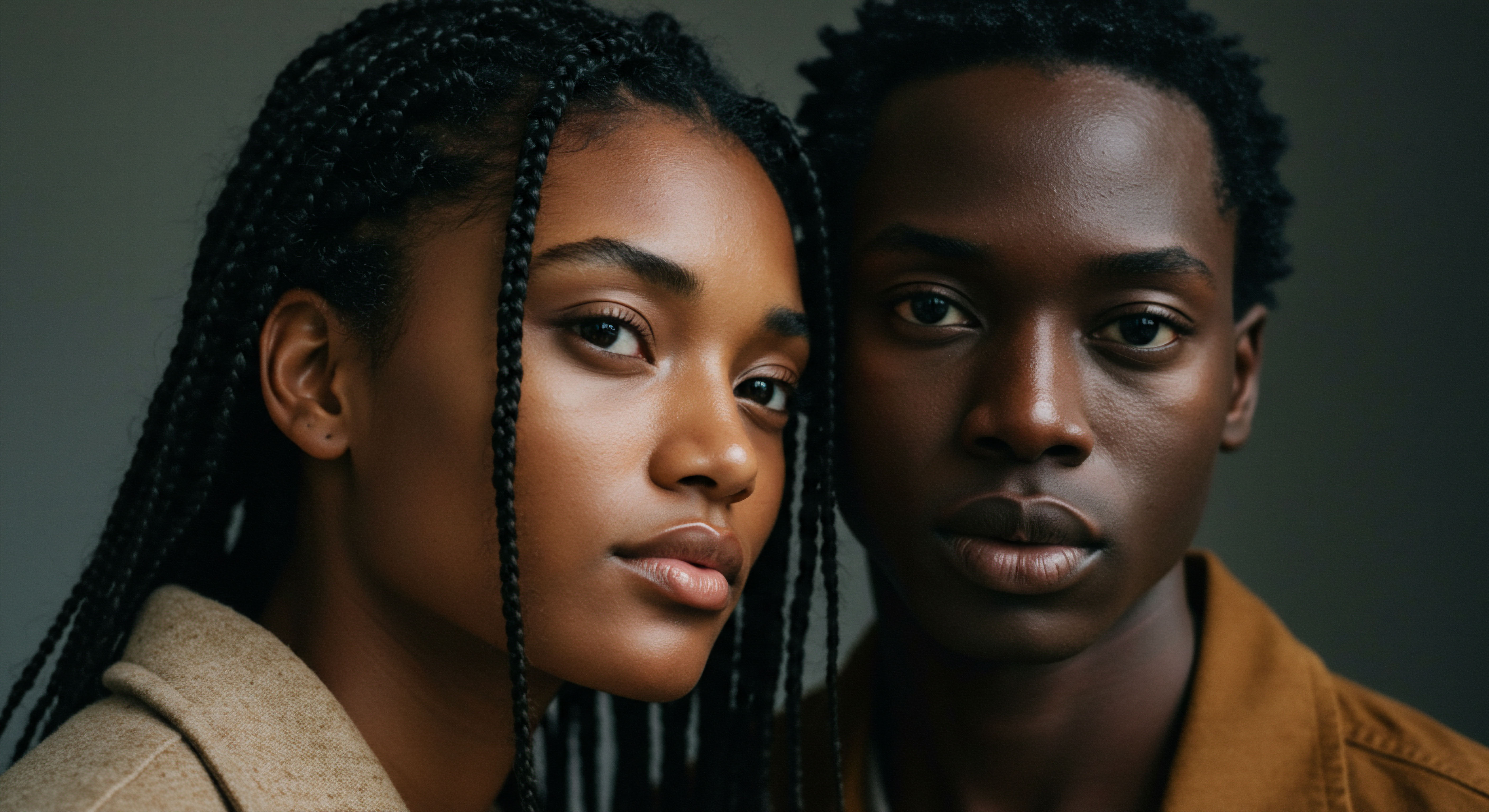
Hair Morphology and Styling Adaptation
The inherent characteristics of textured hair, particularly its coiling and kinking patterns, naturally lend themselves to braiding. This hair type, with its varying degrees of curl and density, offers exceptional versatility for shaping and securing. The natural friction between strands within a coil helps hold braids in place, making them durable and long-lasting without requiring extensive artificial aids. This inherent quality of textured hair contributed to the longevity and widespread practice of braiding in cultures where such hair types are prevalent.
Understanding the basic anatomy of a hair strand—its cuticle, cortex, and medulla—helps explain why certain hair types are more amenable to braiding. The cuticle, the outermost layer of overlapping scales, can interlock with those of neighboring strands when compressed and twisted, providing a strong hold. For highly textured hair, the cuticle layers often lie more open, increasing this natural grip. This structural reality made braiding a practical and aesthetically pleasing option for hair management long before modern hair products existed.
| Historical Context Ancient Egypt |
| Primary Significance Status, Divinity, Power |
| Examples Pharaonic wigs, royal adornments |
| Historical Context West African Societies |
| Primary Significance Social Status, Clan Affiliation, Age, Marital Status |
| Examples Mende, Yoruba, Fula patterns |
| Historical Context Native American Tribes |
| Primary Significance Spiritual Connection, Tribal Identity |
| Examples Plains tribes' long braids, ceremonial styles |
| Historical Context Slavery Era (Americas) |
| Primary Significance Resistance, Communication, Survival |
| Examples Cornrow maps, seed concealment |
| Historical Context Braided hair served diverse roles, from social markers to tools of resistance. |
The ability of braids to keep hair contained and protected from environmental damage also speaks to their functional importance. In agricultural societies, braids prevented hair from interfering with daily tasks. In warmer climates, they allowed for better air circulation around the scalp, contributing to comfort. These practical advantages, combined with their symbolic weight, solidified braids as a cornerstone of human grooming and cultural expression.

Ritual
We turn now to the practices, the hands-on traditions that transform simple strands into statements of history and intention. This section considers the methods and meanings embedded within the very act of braiding, moving beyond abstract concepts to the tangible, lived experience. The ritual of braiding is a shared moment, often passed from one generation to the next, carrying with it not just a technique, but a philosophy of care and connection.
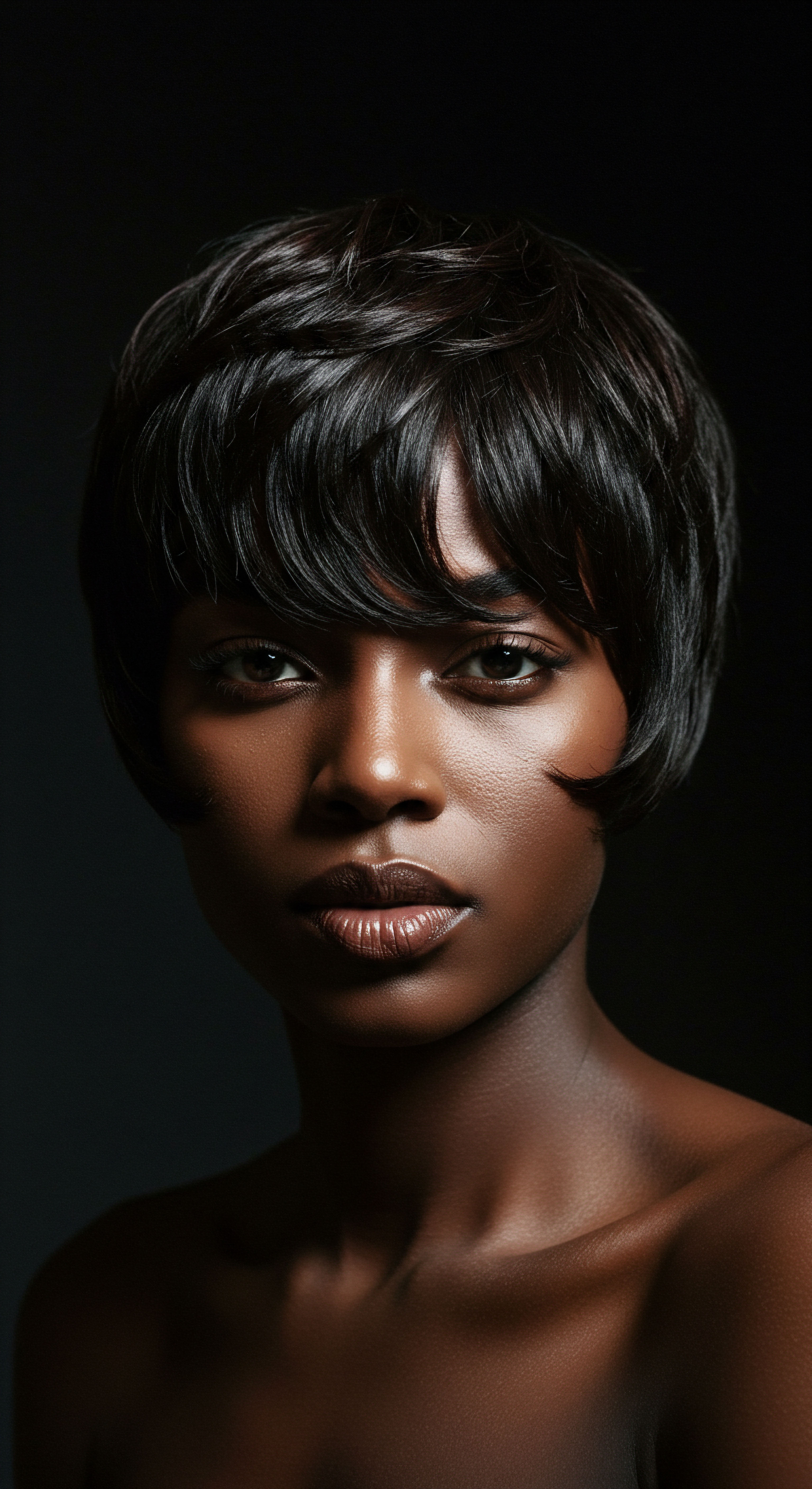
The Practice of Protective Styling
Braids have long been recognized as a fundamental form of protective styling, particularly for textured hair. By securing the hair in plaits, individuals reduce manipulation, minimize tangling, and shield strands from environmental stressors such as sun, wind, and friction. This preservation of hair health was not merely a modern concern; it was a practical necessity for survival and well-being in diverse historical settings. The careful sectioning and binding of hair allowed for length retention and reduced breakage, which was especially valuable in times when hair care resources were limited.
Different cultures developed distinct protective braiding techniques, each suited to their climate, lifestyle, and aesthetic preferences. From the tightly woven cornrows of West Africa, designed for durability and minimal upkeep, to the more elaborate box braids seen in various diasporic communities, the core purpose remained consistent ❉ to safeguard the hair. These styles could last for weeks or even months, providing a low-maintenance solution for hair management while simultaneously serving as a canvas for artistic expression.
- Cornrows A traditional braiding style where hair is braided very close to the scalp, in rows, creating a raised visual effect.
- Box Braids Individual plaits created by dividing hair into square or rectangular sections, offering versatility and protection.
- Fulani Braids A distinctive style often featuring cornrows in the front and back, with a central braid, sometimes adorned with beads or cowrie shells.
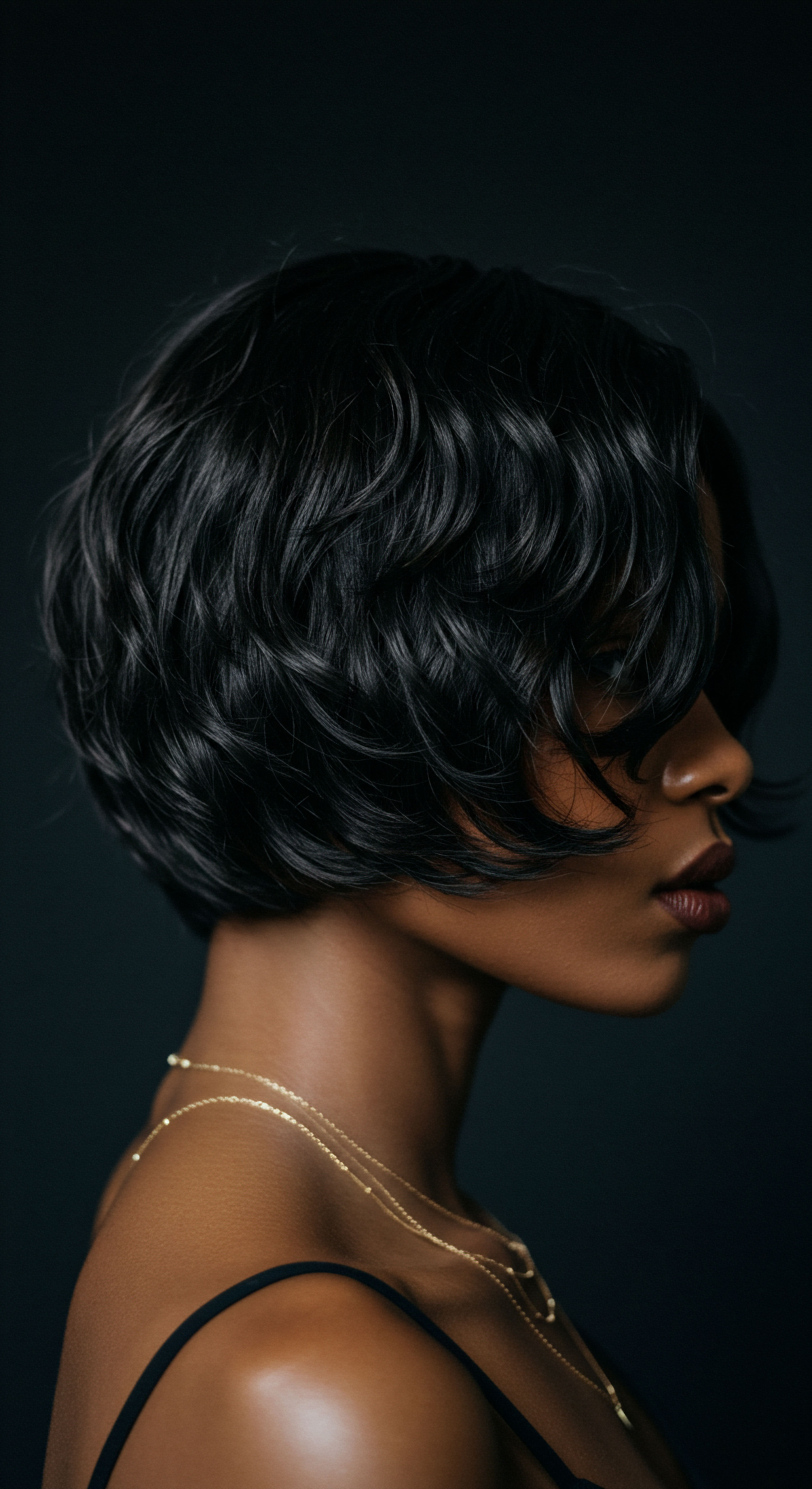
How Did Braids Shape Social Interaction?
The creation of braided hairstyles was, and remains, a profoundly social activity in many communities. It often involved communal gatherings, where stories were shared, wisdom imparted, and bonds strengthened. The act of sitting together for hours, with skilled hands meticulously working on another’s hair, fostered intimacy and intergenerational dialogue. This communal aspect elevated braiding from a mere grooming task to a significant social ritual, reinforcing kinship ties and cultural cohesion.
The communal act of braiding served as a powerful social ritual, strengthening bonds and transmitting cultural heritage.
In some historical contexts, the braiding process was reserved for specific individuals or groups, highlighting the specialized knowledge and respect associated with the craft. Hairdressers, often elder women, held esteemed positions within their communities, their hands serving as conduits for tradition and beauty. The patience and skill required for complex braiding patterns were themselves virtues, valued and celebrated. This shared experience, often spanning generations, meant that each braid carried a legacy of connection and shared identity.
The tools used in historical braiding were often simple, yet effective. Combs crafted from bone, wood, or ivory helped section the hair, while natural oils and butters smoothed the strands and added luster. Adornments like cowrie shells, beads, and precious metals were incorporated not just for beauty, but also for symbolic meaning, signifying wealth, status, or spiritual protection. The materials themselves spoke of a connection to the land and its resources, grounding the practice in the natural world.
| Tool/Adornment Combs |
| Primary Material Wood, Bone, Ivory |
| Historical Significance/Use Sectioning, detangling, ritualistic cleansing |
| Tool/Adornment Natural Oils |
| Primary Material Shea Butter, Palm Oil |
| Historical Significance/Use Moisture, shine, scalp health |
| Tool/Adornment Beads |
| Primary Material Glass, Wood, Clay |
| Historical Significance/Use Decoration, status, spiritual protection |
| Tool/Adornment Cowrie Shells |
| Primary Material Marine Mollusk Shells |
| Historical Significance/Use Fertility, prosperity, currency, decoration |
| Tool/Adornment Simple, natural elements were utilized to create and adorn braided styles. |
The daily and ceremonial care associated with braided hair also speaks to its ritualistic importance. Cleansing routines, oiling, and the eventual undoing and re-braiding of styles were often performed with a sense of reverence. This consistent attention reinforced the idea that hair was not merely an appendage, but a living part of the self, deserving of thoughtful maintenance and respect. The rhythmic motions of braiding, the feeling of strands yielding to gentle hands, created a calming, almost meditative experience for both the braider and the recipient.

Relay
We now journey deeper, seeking the complex layers of meaning that braided hairstyles carried, particularly in times of profound upheaval and cultural exchange. How did these seemingly simple arrangements of hair become powerful conduits for resistance, communication, and the very preservation of cultural memory? This final exploration moves beyond the functional and the communal, reaching into the profound ways braids acted as living documents and declarations in the face of adversity.
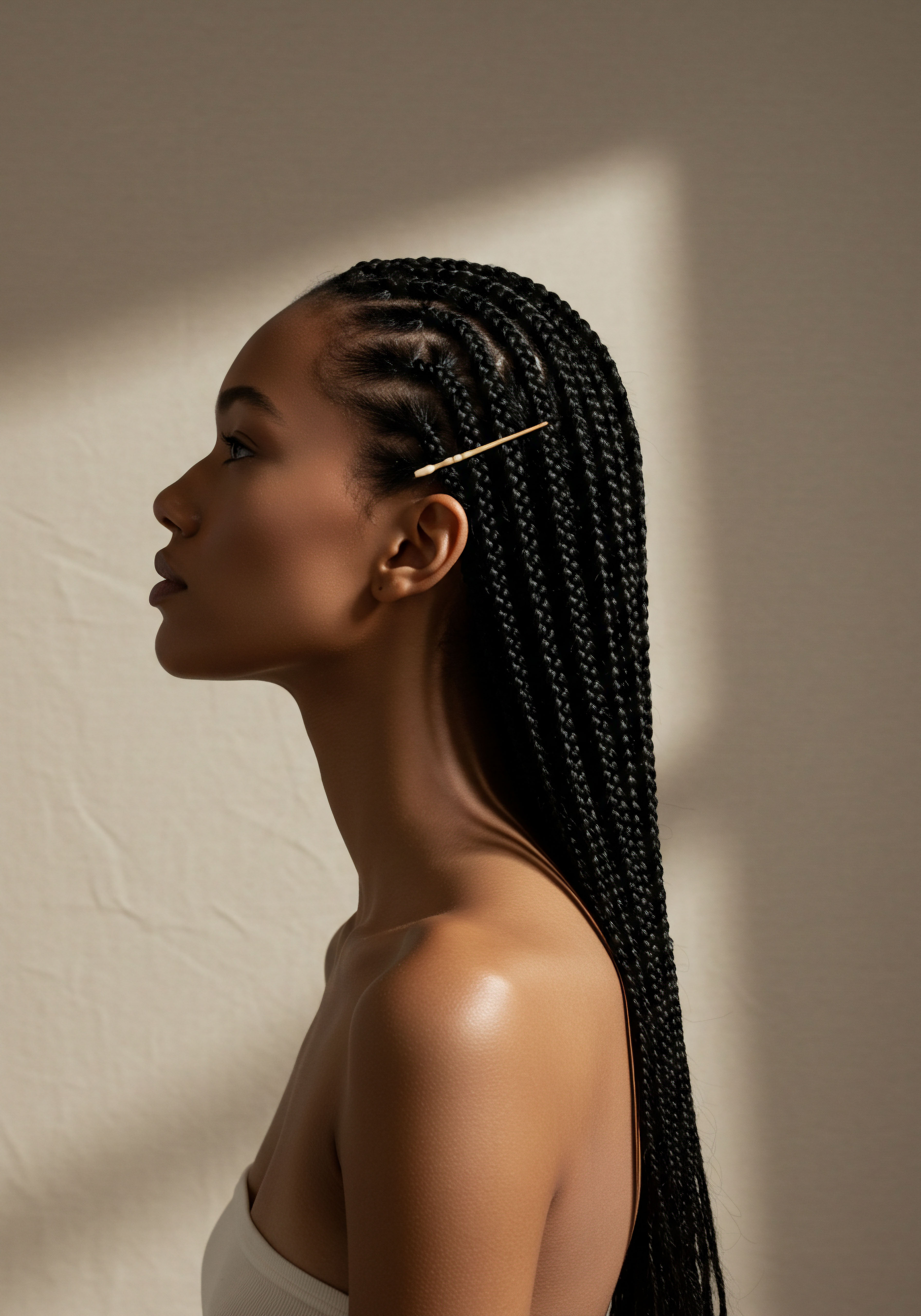
Braids as Coded Language and Survival Maps
During the transatlantic slave trade and the subsequent periods of enslavement in the Americas, braided hairstyles took on a concealed, yet critically important, function. Far from being a mere aesthetic choice, they transformed into covert systems of communication and even literal escape plans. This ingenious adaptation highlights the resilience and resourcefulness of enslaved African people who, stripped of their material possessions and often their spoken languages, found ways to transmit vital information through their hair.
One compelling instance of this practice comes from Colombia, particularly among enslaved Africans in what is now the city of Cali. Historical accounts and oral traditions suggest that women would braid patterns into their hair that served as maps to freedom. These intricate designs depicted the routes to escape, marking paths through forests, rivers, and mountains that led to Palenques—fortified settlements established by formerly enslaved people. The very act of braiding became an act of defiance, a quiet conspiracy hidden in plain sight.
These “map braids” were not merely symbolic; they were functional blueprints for survival. For example, a thick braid might represent a major river, while a zigzag pattern could indicate a winding mountain path. The complexity of these designs ensured that only those with the proper cultural knowledge could decipher their true meaning, making them an exclusive communication channel for those seeking liberation.
During enslavement, braided patterns became secret maps and carriers of seeds, enabling survival and escape.
Beyond directional guidance, braids also served to conceal valuable resources. Seeds, gold dust, or even small pieces of food could be hidden within thick, tightly packed braids, transported discreetly from one location to another. This practice was vital for sustenance and for rebuilding communities once freedom was attained.
The hair, therefore, became a living pouch, a silent carrier of hope and future possibilities. This dual purpose—communication and concealment—underscores the extraordinary adaptability of cultural practices under extreme duress.
- Concealment Seeds, gold dust, or small provisions hidden within thick braids for survival or future planting.
- Directional Maps Specific patterns depicting escape routes to freedom, often leading to Palenques or other safe havens.
- Status and Origin Subtly indicating a person’s background or social standing to fellow enslaved individuals, aiding solidarity.

What Role Did Braids Play in Resistance and Cultural Continuity?
The act of maintaining traditional braided styles during periods of forced assimilation or cultural suppression was, in itself, a profound act of resistance. Colonial powers and slaveholders often sought to strip enslaved and colonized peoples of their cultural markers, including their hairstyles, as a means of control and dehumanization. Yet, despite immense pressure, many individuals continued to wear and pass down braiding traditions, transforming them into symbols of enduring identity and defiance.
This continuity of styling practices became a quiet, yet potent, rejection of imposed norms. It was a way to hold onto a piece of one’s heritage, to maintain a connection to ancestral lands and knowledge, even when physically separated by vast oceans. The hands that braided were not just styling hair; they were preserving a legacy, ensuring that the visual language of their ancestors would persist. This defiance, though often silent, contributed significantly to the psychological and spiritual survival of communities facing systematic oppression.
The cultural memory embedded within braiding patterns allowed for a continuous dialogue with the past. Each style could evoke stories, proverbs, or historical events, serving as a non-verbal educational tool. For younger generations, seeing and wearing these styles was a direct link to their lineage, instilling a sense of pride and belonging that transcended their immediate circumstances. This resilience in maintaining cultural practices, even in the face of immense pressure, speaks volumes about the power of hair as a repository of identity and a vehicle for collective memory.
The significance of braids during these times extended beyond individual acts of resistance to broader community solidarity. When a community collectively maintained specific styles, it reinforced their shared identity and resistance to external pressures. It created a visible sign of unity, a silent pledge of mutual support.
This collective affirmation of cultural identity, expressed through hair, became a powerful, non-violent form of protest and a cornerstone of cultural continuity. The historical journey of braided hair thus becomes a testament to human spirit, its ability to find expression and meaning even in the most challenging environments.
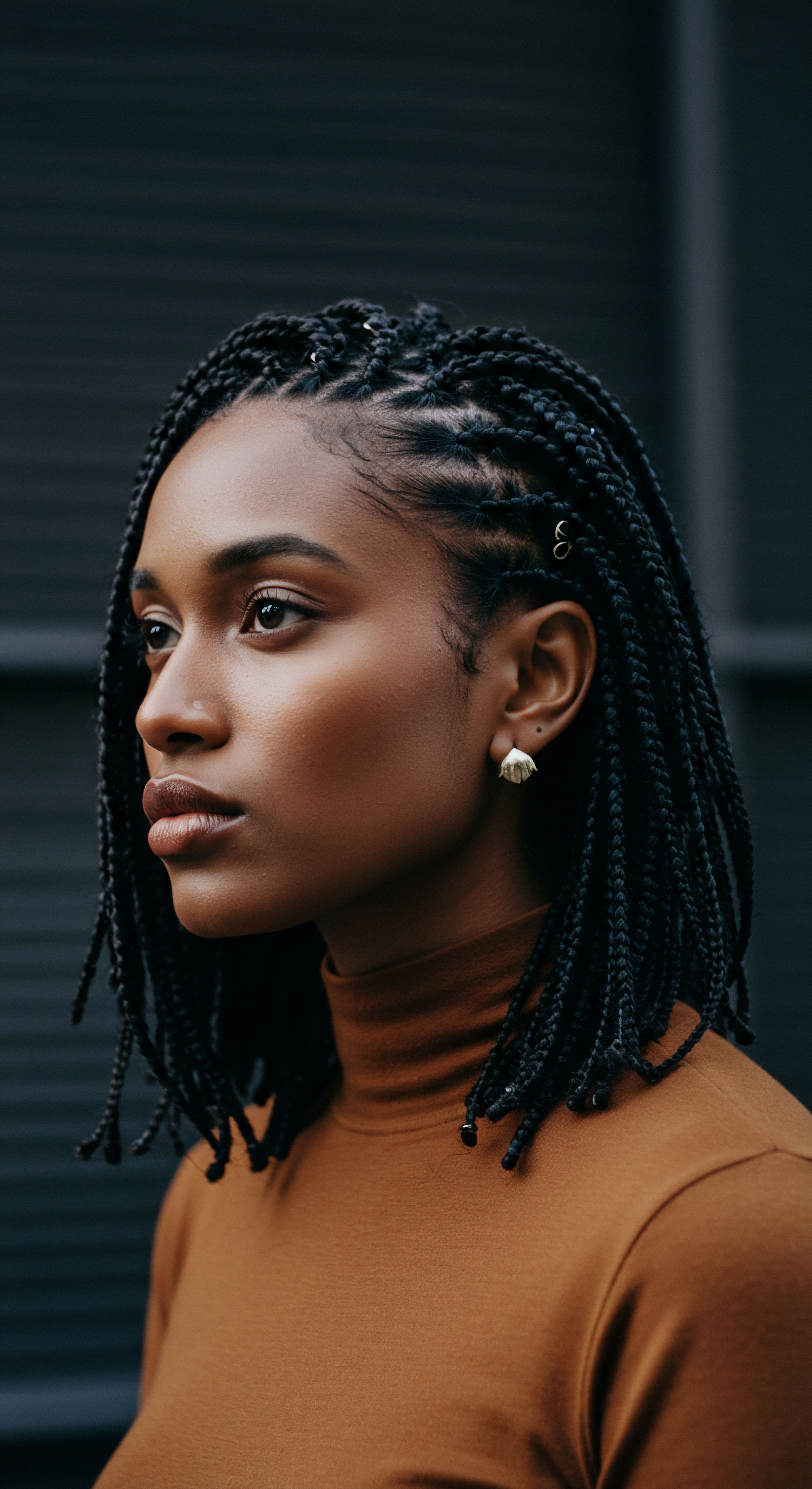
Reflection
The strands of history, much like the hair they describe, are not simple lines but intricate connections, constantly intertwining. Braided hairstyles stand as enduring symbols of human ingenuity, adaptability, and the profound ways we communicate our place in the world. They invite us to look closer, to see not just a style, but a story, a lineage, a declaration. This quiet strength, present in every coil and plait, reminds us that true beauty often lies in the depths of meaning, in the whispers of the past carried forward with grace.

References
- De Saussure, Ferdinand. (1983). Course in General Linguistics. Open Court Publishing Company.
- Eicher, Joanne B. & Erekosima, Tonye V. (1995). Dress and Ethnicity ❉ Change Across Space and Time. Berg Publishers.
- Mercer, Kobena. (1994). Welcome to the Jungle ❉ New Positions in Black Cultural Studies. Routledge.
- Byrd, Ayana D. & Tharps, Lori L. (2014). Hair Story ❉ Untangling the Roots of Black Hair in America. St. Martin’s Press.
- Hooks, Bell. (1992). Black Looks ❉ Race and Representation. South End Press.
- Sieber, Roy, & Herreman, Roslyn. (2000). Hair in African Art and Culture. Museum for African Art.
- Gilroy, Paul. (1993). The Black Atlantic ❉ Modernity and Double Consciousness. Harvard University Press.
- Gates Jr. Henry Louis. (1988). The Signifying Monkey ❉ A Theory of African-American Literary Criticism. Oxford University Press.